
Many famous kung fu moves are useless in real combat - Photo: CN
Western martial arts experts who have spent a lot of time researching kung fu such as Benjamin Judkins and Paul Bowman point out famous and beautiful moves but they are not practical for combat.
Acupuncture is real but not for fighting
Acupressure points (also known as pulse points) are often described in martial arts novels and Hong Kong movies.
This technique is said to be based on the “meridian” system of traditional medicine, allowing one to subdue an opponent with a touch to locations believed to be “nerve nodes”.
Some ancient schools such as Wing Chun or Hung Ga used to incorporate the concept of hitting “acupuncture points” as an advanced skill.
However, experts say that to date there is no scientific documentation proving that the acupuncture system works as described in classical martial arts.

Acupressure is real, but has no martial arts value - Photo: CN
Dr. Paul Taylor, a lecturer in traditional martial arts at the University of Birmingham (UK), asserted in an interview with the Journal of Martial Studies in 2020 that “the idea of using a light touch to lock a muscle is physiologically impossible.”
In real combat, the opponent's body is always moving, tensing, rotating and resisting continuously. To hit a small point on a moving body and under protective clothing is almost impossible, especially in a state of high adrenaline.
“If it worked, we would have seen it in professional competition, where every optimal technique is exploited,” stressed American MMA coach Stephen Koepfer, who specializes in combatives.
According to statistics from mixed martial arts associations, no professional boxer has ever used a similar technique to acupressure to end a match. Due to the lack of mechanical basis and the heavy influence of literature and cinema, acupressure is increasingly considered a martial arts legend rather than a practical self-defense tool.
Flying feet, only beautiful on film
Flying kicks (a group of techniques of flying kicks, spinning kicks, or flying kicks with the legs clamped around the neck) are moves that overwhelm the audience, especially in theatrical-influenced martial arts such as Shaolin performance, modern wushu, or taekwondo performance.
Its origins come from the tradition of martial arts performed in temples and pagodas and later flourished when Hong Kong cinema developed in the 1970s and 1980s.
Although beautiful, the flying kick reveals many technical shortcomings in real combat conditions. When jumping, the performer's center of gravity is suspended, losing the ability to react and defend; if the target is missed, the ability to land poorly can cause the performer to injure himself.
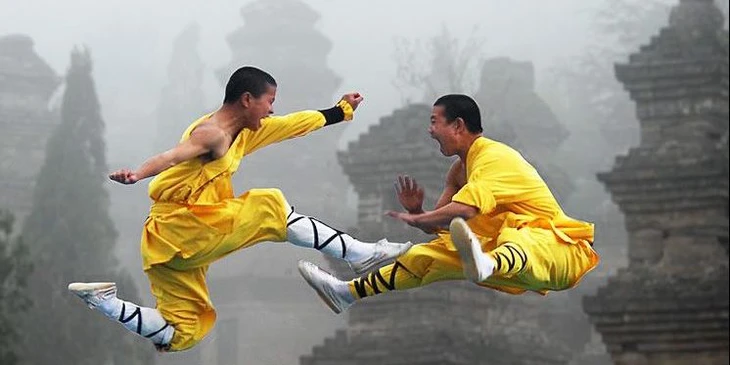
Flying kicks appear frequently in movies - Photo: XN
Thai Muay Thai coach Somchai Prajak, at the Combat Reality Conference 2022 in Singapore, analyzed that “a technique may take half a second to jump but only 0.1 seconds to be punched straight in the face by the opponent”.
In tight spaces like bars, stairwells, or crowded streets, the kick has almost no room to deploy.
Jump kicks also require flexible clothing; jeans or leather shoes significantly reduce the range of motion. A 2019 study in the International Journal of Applied Combat found that more than 78% of training kicks resulted in foot or knee injuries due to incorrect landing.
Because of the high risk, large amplitude, and easy counterattack, flying kicks today mainly exist in sports performances and cinema rather than street self-defense.
Continuous kicks, full of openings
The chain kick is a familiar image in the Southern Boxing, Hung Ga Boxing or on the wushu stage, where martial artists launch a series of continuous kicks at high speed. This technique became famous thanks to Hong Kong martial arts movies of the 1970s-1990s, helping the martial artist's body almost "fly" in the air to create a visual effect.
However, in modern sparring, consecutive kicks are undervalued due to the high risk. When a fighter kicks continuously, the fulcrum is narrowed, the center of gravity is shifted, and recovery time is prolonged.

Continuous kicks are practiced a lot in kung fu schools - Photo: CP
According to a technical analysis by Muay Thai coach John Wayne Parr, interviewed by SCMP in 2021, “long chains of kicks open the fighter’s flanks, making him lose balance and expose him to counterattacks.”
Bloody Elbow's analysis of Glory Kickboxing and ONE Championship match video data from 2020 also shows that the majority of kick knockouts come from single, precise, high-velocity strikes - rather than extended chains of kicks.
The reason lies in the neurological mechanism: the more movements, the easier it is to deviate from the amplitude and reduce the power. At the same time, opponents in the ring are trained to read the rhythm very quickly; just one missed kick, the boxer with the continuous kick can easily be swept to the post or hugged.
Therefore, the continuous kick is not considered a tactical foundation but is only for show, or used as a surprise attack at rare moments. In street self-defense, where the ground is rough and there is no space to turn, the effectiveness of the continuous kick is greatly reduced.
Palm techniques are useless without internal energy.
Palm techniques appear throughout many traditional kung fu schools such as Baguazhang, Nanquan, and Tai Chi.
In martial arts novels and films, palm techniques are often considered the most powerful attack method, dispersing the most powerful internal force. Of course, because "internal force" almost does not exist in reality, the attack power of palm techniques is therefore just anecdotal.
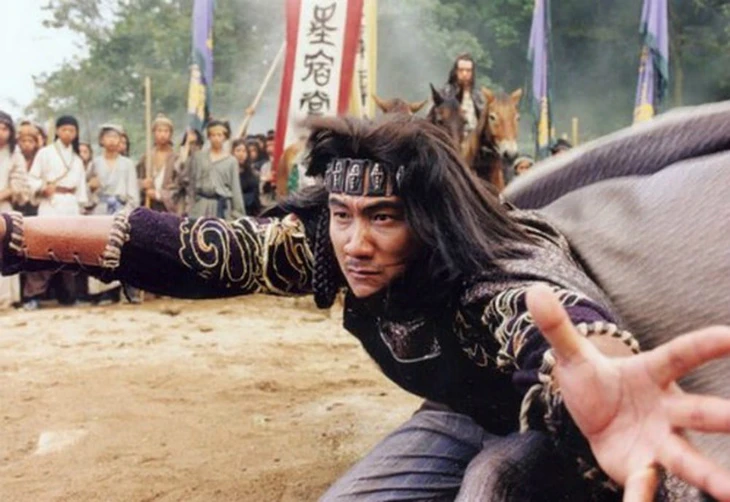
Palm techniques are only powerful in martial arts novels and movies - Photo: SC
Palm techniques are not completely useless. In the context of bare-knuckle self-defense, they are beneficial. According to an injury analysis by martial arts physician Michael Kelly in Combat Sports Medicine (2016), fist punching can easily cause a metacarpal fracture (“boxer’s fracture”), especially in the untrained.
Hitting with the base of the palm reduces this risk and still creates significant force on the lower jaw or sternum. Palms are therefore quite suitable for sparring, reducing damage.
However, in the modern ring, thick gloves and point-strike tactics give punching an advantage. Punches concentrate power over a small area, are more likely to cause a knockout, and make better use of hip rotation.
Coach Greg Jackson (USA), in an interview with ESPN in 2015, commented: “In competition, punching is the option with a higher success rate because of the scoring mechanism and protective equipment”. This is the reason why palm strikes rarely appear in MMA, kickboxing or boxing.
Source: https://tuoitre.vn/nhung-chieu-thuc-kung-fu-tru-danh-nhung-vo-dung-trong-thuc-chien-20251102042935997.htm


![[Photo] Ho Chi Minh City Youth Take Action for a Cleaner Environment](https://vphoto.vietnam.vn/thumb/1200x675/vietnam/resource/IMAGE/2025/11/04/1762233574890_550816358-1108586934787014-6430522970717297480-n-1-jpg.webp)
![[Photo] The road connecting Dong Nai with Ho Chi Minh City is still unfinished after 5 years of construction.](https://vphoto.vietnam.vn/thumb/1200x675/vietnam/resource/IMAGE/2025/11/04/1762241675985_ndo_br_dji-20251104104418-0635-d-resize-1295-jpg.webp)

![[Photo] Ca Mau "struggling" to cope with the highest tide of the year, forecast to exceed alert level 3](https://vphoto.vietnam.vn/thumb/1200x675/vietnam/resource/IMAGE/2025/11/04/1762235371445_ndo_br_trieu-cuong-2-6486-jpg.webp)
![[Photo] Panorama of the Patriotic Emulation Congress of Nhan Dan Newspaper for the period 2025-2030](https://vphoto.vietnam.vn/thumb/1200x675/vietnam/resource/IMAGE/2025/11/04/1762252775462_ndo_br_dhthiduayeuncbaond-6125-jpg.webp)



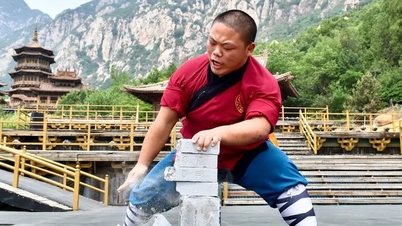

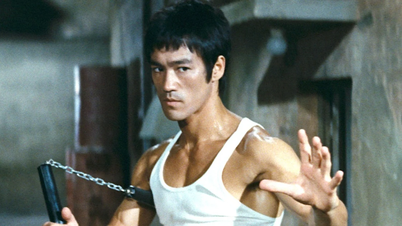
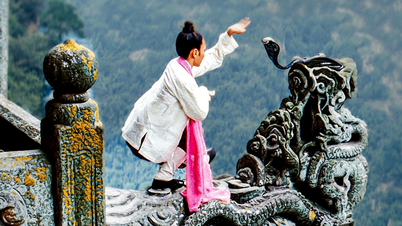






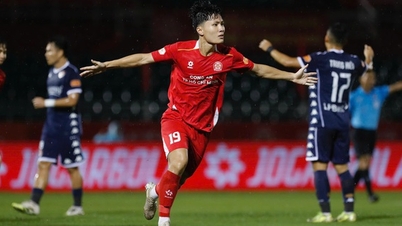






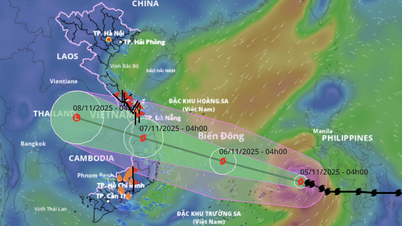

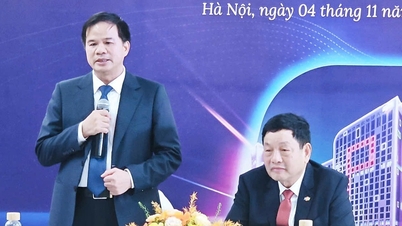


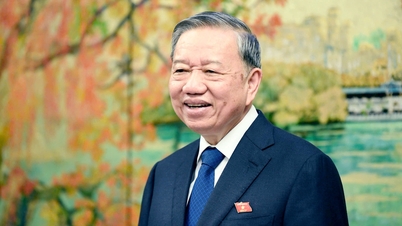









































































Comment (0)